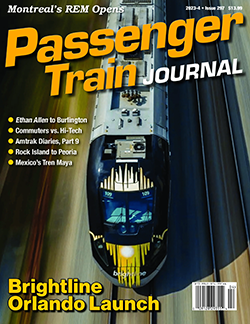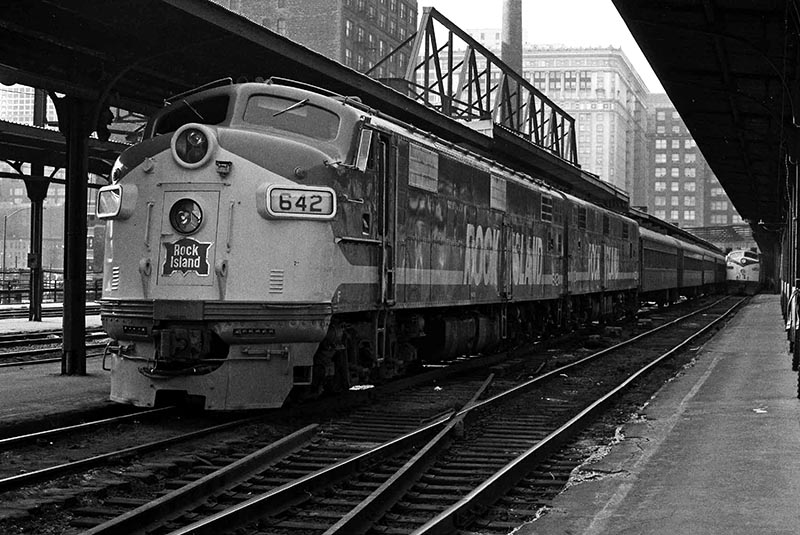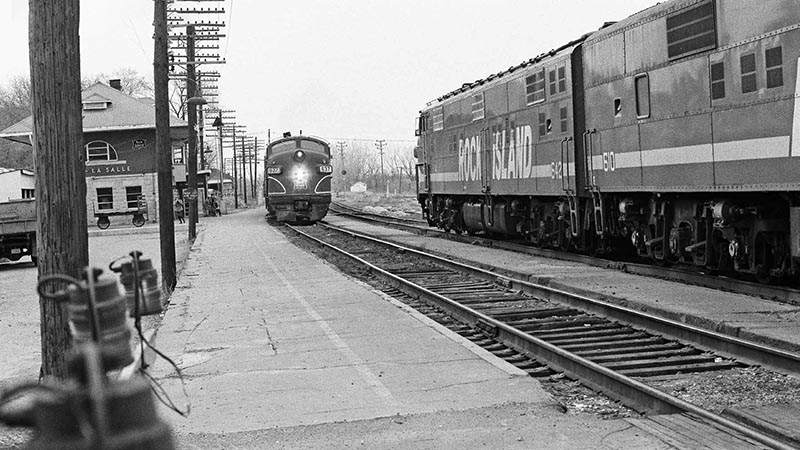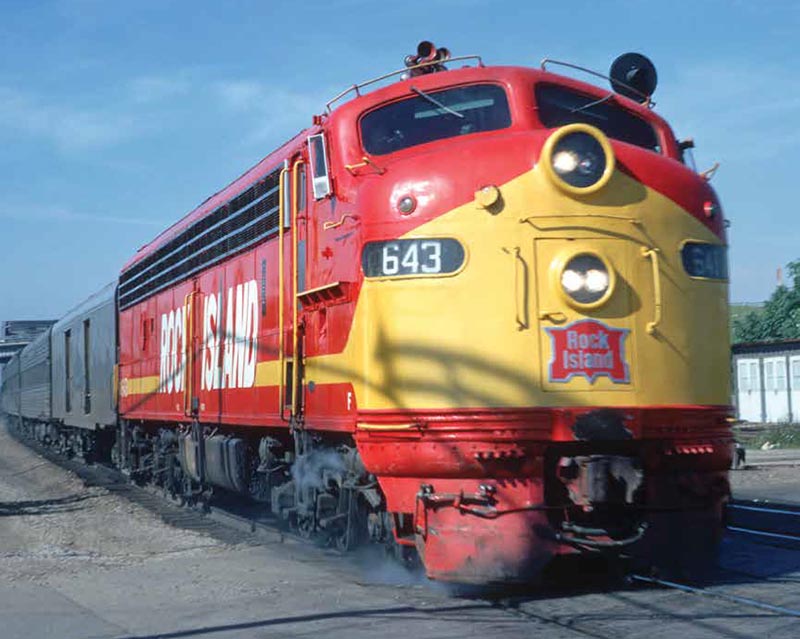 by Gene Harmon/photos by the author except as noted
by Gene Harmon/photos by the author except as noted
Our school, Lake Forest College, closed down during the student strike of May 7-9, 1970. The Vietnam war protests were in full swing after the student killings at Kent State University. After we marched on Fort Sheridan, classes at college were terminated for a brief period in protest. Classmates Jake Petrequin, Jeff Darbee, and I decided to visit Peoria via the Chicago, Rock Island & Pacific Railroad (CRI&P).
Our first leg was aboard Train 5-9, the unnamed remnant of the Corn Belt Rocket. The consist of Train 5-9 was CRI&P E8A 650; baggage car 4363 (American Car & Foundry); coaches 340 (built as Golden Flute by Pullman-Standard), 339 (built as Golden Harp by P-S), and 346 (built as Golden Lyre by P-S); club-diner 411 (built as coffee-shop tavern Golden Bowl); and club-parlor 481 Pacific Shore (originally built for New York Central’s 20th Century Limited as Atlantic Shore and acquired by Rock Island in 1959). It was as though we had a coach version of the Golden State in 1970. We traveled to LaSalle, Ill., and enjoyed dinner in the club-diner, which included trout for $2.26 served by an attentive waiter.

ABOVE: A Rock Island commuter train led by two E7s waits at left, adjacent to Train 5-9 at LaSalle Street Station prior to our departure from Chicago to LaSalle-Peru, Ill., in May 1970.
It struck me as heroic that Rock Island, in the midst of an approaching death rattle (bankruptcy came in 1975 and the company dissolved in 1980), could field a respectable train with waiters in dress whites, linen on the tables, and fine food, not to mention parlor car service in a former 20th Century Limited car that once boasted a barber shop. Pacific Shore later joined CRI&P car 427 (built as Golden Harvest) to form the popular Track One restaurant operated by Rock Island crews at LaSalle Street Station in Chicago from 1972 until 1975.
We noted Gulf, Mobile & Ohio’s “Plug” (the only GM&O commuter train) in Joliet, waiting for us to clear the crossing. Sixty-five minutes later, we detrained at the Rock’s Peru-LaSalle station, 99 miles west of Chicago. The station agent told us that trains 7 and 10 (formerly the Rocky Mountain Rocket to Denver and Colorado Springs and, in 1970, running only to and from Council Bluffs, Iowa) would be coming off at the end of the month. We saw westbound Train 11, the newly named Peorian (formerly the Peoria Rocket), arrive, followed by several freights powered by weary F-units. We also noticed stock cars that had been converted to boxcars using plywood and caulking to help CRI&P deal with car shortages.
The Rock Island agent had recommended a cheap hotel in town called the Vendome. Our room cost $9.45 for the three of us, with a working toilet in the closet. We celebrated these old hotels, which were often clean and always cheap. They have now disappeared from small-town America.

ABOVE: As we continued our trip to Peoria, Rock Island Train 7, powered by E7A 637, arrived at Peru-LaSalle while eastbound E7s 642 and 610 waited with a freight. The opposite end of the depot was lettered LaSalle-Peru.
The next morning, we ventured over to the LaSalle & Bureau County Railroad. This was just weeks before an exposé re-ported that LS&BC had been repainting Penn Central freight cars and claiming them as its own. LS&BC had Baldwin diesel-electric switchers, and we were intrigued by this obscure line. Upon arrival at the shops we were informed we would need to visit a Mr. Carus, LS&BC’s owner, for permission to take pictures.
Carus lived nearby in a huge but shopworn Victorian mansion. It was well on its way to becoming the “Addams Family” home. We knocked and Mr. Carus appeared out of the gloom. He declined to give us permission to ride the Baldwins but we were free to take pictures. After returning, the engine house crew was a bit surprised to see us, because, knowing the somewhat foreboding nature of the man living there, they expected we would not dare approach the Carus home…



